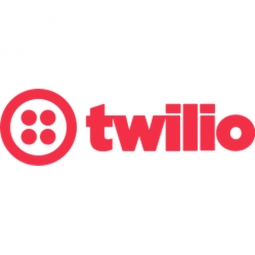Technology Category
- Platform as a Service (PaaS) - Application Development Platforms
Applicable Industries
- Cement
- Telecommunications
Applicable Functions
- Quality Assurance
Use Cases
- Onsite Human Safety Management
- Search & Rescue
About The Customer
Kitestring was founded in 2014 by Stephan Boyer, a grad student at MIT, with the aim of ensuring the safety of his girlfriend while she walked home through a risky neighborhood. The app was initially intended for family and friends, but Boyer soon realized the potential benefit for the public and launched the service to the masses. Within a week of its launch, Kitestring's customer base grew from a few friends and family members to 10,000, and surpassed 80,000 over the next few months. Kitestring is now live in the US and UK, and continues to expand into new markets.
The Challenge
Kitestring, a personal safety SMS app, was faced with the challenge of creating a reliable way to ensure people arrive at their intended destinations safely. The idea was conceived by Stephan Boyer, a grad student at MIT, who wanted to ensure his girlfriend's safety while she walked home through a risky neighborhood in San Francisco. Boyer aimed to build an app that would allow her to set the duration for her walk home and check in via SMS once she was home. The challenge was not just to ensure timely and reliable message delivery, but also to scale the service to the masses. The app needed to be reliable, scalable, and easy to use for anyone, regardless of whether they owned a smartphone or not.
The Solution
Boyer chose to use Twilio SMS to ensure timely and reliable message delivery. Users create an account on Kitestring's website, enter their phone number, and receive an SMS with a verification code. After setting up the account, users enter their emergency contacts' phone numbers. To use the emergency notification solution, users send an SMS specifying how many minutes a task they are about to embark on should take. If a user fails to respond to Kitestring's check-in SMS 5 minutes after their trip is up, Kitestring automatically contacts the user's emergency contacts using Twilio SMS. Boyer was confident that with Twilio's platform, he could scale effortlessly and build new features for Kitestring easily.
Operational Impact
Quantitative Benefit

Case Study missing?
Start adding your own!
Register with your work email and create a new case study profile for your business.
Related Case Studies.

Case Study
System 800xA at Indian Cement Plants
Chettinad Cement recognized that further efficiencies could be achieved in its cement manufacturing process. It looked to investing in comprehensive operational and control technologies to manage and derive productivity and energy efficiency gains from the assets on Line 2, their second plant in India.

Case Study
Vodafone Hosted On AWS
Vodafone found that traffic for the applications peak during the four-month period when the international cricket season is at its height in Australia. During the 2011/2012 cricket season, 700,000 consumers downloaded the Cricket Live Australia application. Vodafone needed to be able to meet customer demand, but didn’t want to invest in additional resources that would be underutilized during cricket’s off-season.

Case Study
SKT, Construction of Smart Office Environment
SK T-Tower is the headquarters of SK Telecom. Inside the building, different types of mobile devices, such as laptops, smartphones and tablets, are in use, and with the increase in WLAN traffic and the use of quality multimedia data, the volume of wireless data sees an explosive growth. Users want limitless Internet access in various places in addition to designated areas.






